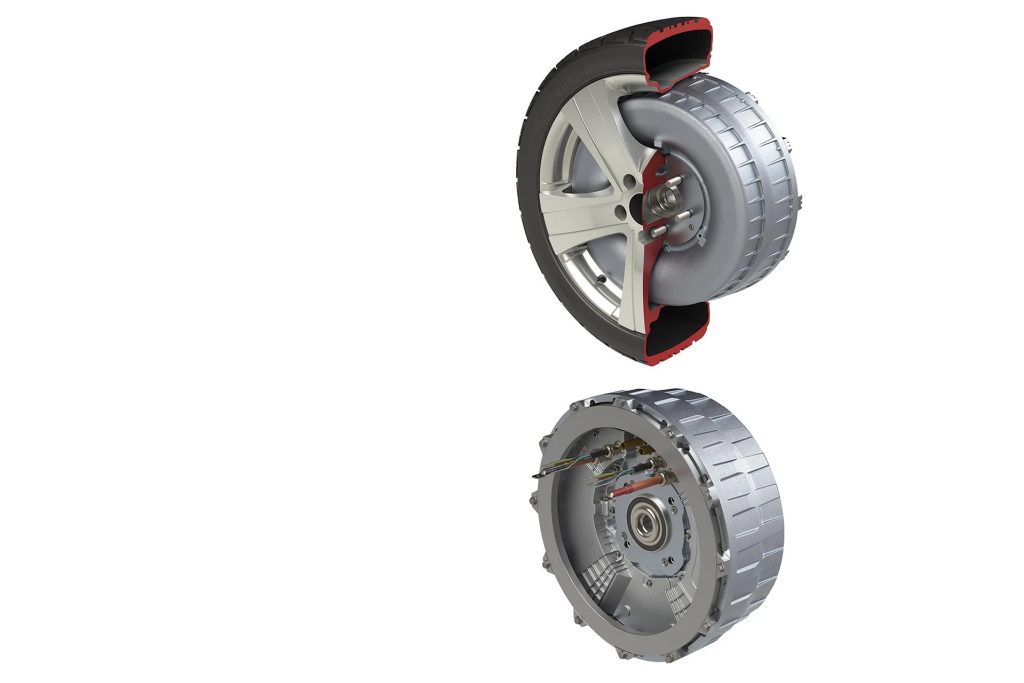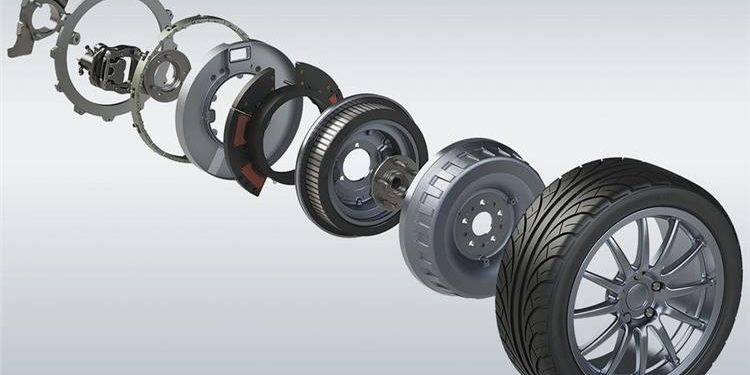Are In-Wheel Motors the Next Big Thing for EVs?
Words NZ Autocar | Images Protean Electric, Autocar Professional
In-wheel motors (IWMs) have been around for ages but don’t seem to have caught on. Disadvantages include a harsh environment, added unsprung weight, and effects on steering and ride quality. To date, car makers experimenting with IWMs have circumvented that by having in-wheel motors at the rear and a single motor at the front. But widespread adoption remains elusive. Cost is also a factor.

There are clear advantages to IWMs. Packaging is the first. In an ICE car or EV the incompressible motor, transmission and driveshaft cannot be part of the crumple zone. By removing these from the centreline of the vehicle, the wheels can be pushed out to the corners, freeing up interior space, and crumple zones are easier to design. Moreover, there are no losses from reduction transmissions or drivetrain components. And braking improves, while power at each wheel allows for simpler torque vectoring. Understeer can be engineered into a car without detuning the front suspension, meaning ultimate grip improves.
It is these theoretical advantages that has had British firm Protean Electric working to solve the drawbacks for the past 15 years. The firm has now developed a complete drive unit that fits inside the wheel, including the inverter.
The latest Gen 5 Proteandrive IWM (PD18) has recently finished a validation programme. It has set a new industry standard for IWMs, according to the firm, with an output of 103kW and 1500Nm, while weighing 39kg. It is designed for 400V electrical architectures but the firm expects to have an 800v version ready soon.

Two motors in either a front- or rear-wheel-drive configuration give peak power of 206kW, while four-wheel drive offers 412kW. Such vehicles can run to 225km/h.
The latest IWM from the firm features an integrated disc brake, fits inside an 18-inch wheel and is validated for use in mainstream vehicles. It has passed 15-year and 300,000km durability testing. The motors were subjected to the kinds of abuse an IWM might encounter, including severe shock, vibration, thermal cycles, sand, dust, water and chemical contamination.
Protean has also spent years studying the effects of IWMs on unsprung weight. Lotus Engineering was the first to undertake such studies and found that unsprung weight isn’t an issue for IWMs. For the heavier a car is the less of an effect it poses. Any effects of unsprung weight can be negated by suspension and damper tuning.
The new IWD is compatible with cars, SUVs, vans and autonomous pods weighing up to 5.2 tonnes. They also have a smaller 80kW unit for regular passenger vehicles weighing up to 3.2 tonnes.
As to the future, small-scale production of Protean’s IWM is underway in China, with the units soon to hit the domestic market in a new EV.





